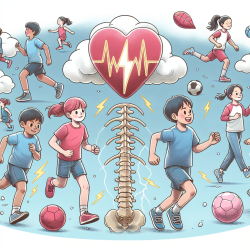Asthma remains a significant health issue among school-going adolescents, particularly in low-income and middle-income countries (LMICs) such as South Africa. A recent study titled Prevalence, severity and risk factors for asthma in school-going adolescents in KwaZulu Natal, South Africa sheds light on the prevalence, severity, and risk factors associated with asthma in this demographic. This blog aims to help practitioners improve their skills by implementing the research outcomes and encouraging further research.
Key Findings
The study, conducted between May 2019 and June 2021, involved 3957 adolescents aged 13 and 14 from randomly selected schools in Durban, South Africa. The key findings are as follows:
- The prevalence of lifetime asthma was 24.6%, current asthma was 13.7%, and severe asthma was 9.1%.
- Only 12.9% of the population had ever been diagnosed with asthma, with a majority being diagnosed by a doctor.
- Severe asthma was associated with several factors, including fee-paying school quintile, overweight, exposure to traffic pollution, tobacco smoking, rhinoconjunctivitis, and eczema.
- Short-acting beta agonists (SABAs) were more commonly used than inhaled corticosteroids (ICS), indicating a gap in appropriate asthma management.
Implications for Practitioners
Practitioners can draw several important lessons from this study to improve asthma management among adolescents:
1. Enhance Diagnosis and Awareness
The study highlights that severe asthma symptoms are underdiagnosed. Practitioners should focus on improving diagnostic accuracy through comprehensive assessments and increased awareness among parents and educators about the symptoms of asthma.
2. Address Environmental and Lifestyle Factors
Environmental and lifestyle factors such as exposure to traffic pollution, tobacco smoking, and diet significantly impact asthma severity. Practitioners should consider these factors when developing treatment plans and offer guidance on mitigating these risks.
3. Promote the Use of Inhaled Corticosteroids
The low use of ICS among adolescents indicates a need for better education and access to appropriate asthma medications. Practitioners should emphasize the importance of ICS in managing asthma and work towards making these medications more accessible.
4. Implement School-Based Interventions
Given the association between school quintiles and asthma severity, school-based interventions can be particularly effective. These could include asthma education programs, regular health check-ups, and collaborations with local healthcare providers to ensure timely diagnosis and treatment.
Encouraging Further Research
The study opens several avenues for further research:
- Investigate the long-term impact of environmental and lifestyle changes on asthma severity.
- Explore the effectiveness of school-based interventions in reducing asthma symptoms and improving quality of life.
- Study the barriers to accessing ICS and other essential asthma medications in LMICs.
By focusing on these areas, researchers can contribute to developing more effective strategies for managing asthma among adolescents in LMICs.
To read the original research paper, please follow this link: Prevalence, severity and risk factors for asthma in school-going adolescents in KwaZulu Natal, South Africa.










